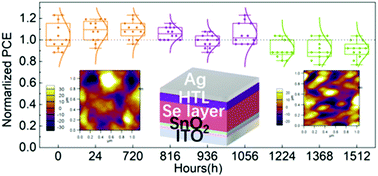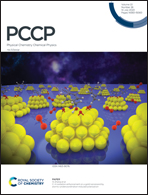Improved stability and efficiency of polymer-based selenium solar cells through the usage of tin(iv) oxide in the electron transport layers and the analysis of aging dynamics†
Abstract
Recently, in the arena of finding substitutes for lead-containing perovskite solar cells, the oldest selenium solar cells (SSCs) have been reconsidered by many scientists due to their suitable energy level structure and less-toxic nature. A lot of research efforts have been made to improve the efficiency of SSCs through seeking suitable substrates and modifying the process of Se crystallization. However, little attention has been paid to investigating the stability of SSCs. In addition, one crucial point that is neglected by researchers could be the potential applications of low-cost SSCs in complicated and tough environments, owing to the intrinsic physicochemical resistance of the Se material. To address these issues, in this research, SSCs with an elaborately designed architecture have been presented, and the highest efficiency (3.7%) among SSCs with organic hole transport layers was achieved. Additionally, a dozen of P3HT-based SSCs were demonstrated to maintain 92% efficiency after more than 1500 hours. The favorable long-term stability of the SSCs allowed us to carefully analyze the changes in each dynamic parameter during aging and helped explore the factors that affect the device behaviors. These results would pave the way for the application of the ultra-stable SSCs in harsh conditions.



 Please wait while we load your content...
Please wait while we load your content...